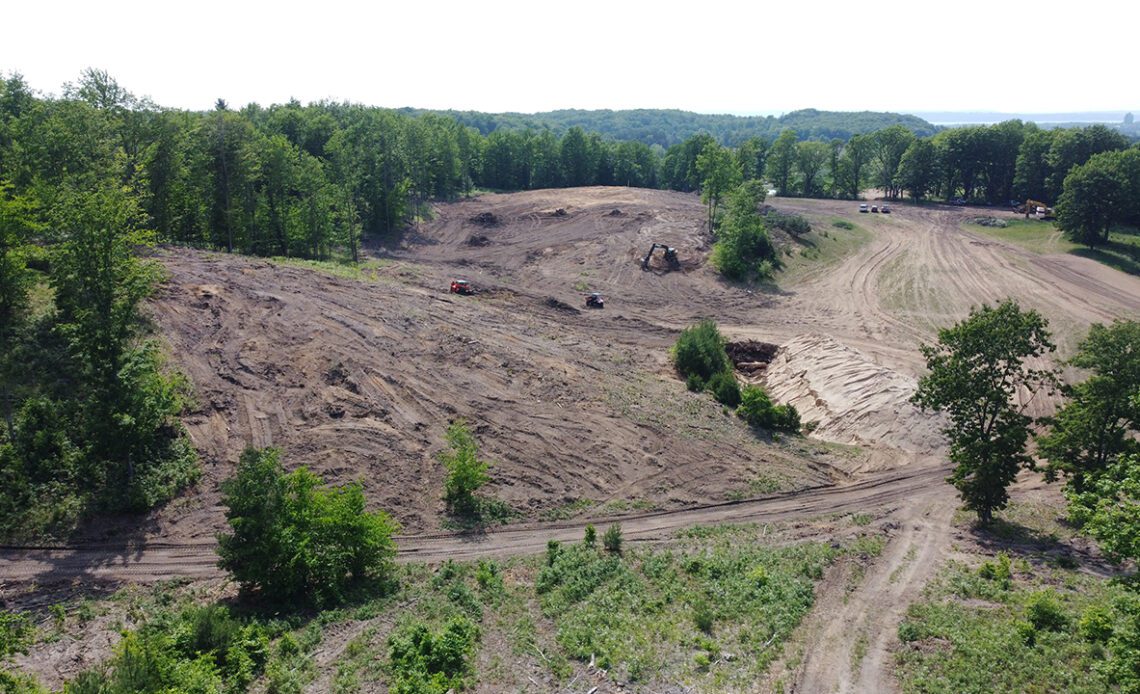Crews work on High Pointe Golf Club in Michigan. (Jason Lusk/Golfweek)
There’s one thing about which Trump and Doak are not totally aligned. The renovated High Pointe will feature new bent grass greens that will provide much faster putting speeds than with the original course. Trump said Doak had to soften a few of the contours on the greens on the preexisting holes, and he is adamant that his sophisticated clientele prefers fast greens that roll around a 12 on the Stimpmeter. Doak isn’t so sure.
“Hopefully I’ll back him off that just a little bit,” Doak said with a laugh during an interview by phone from an airport on one of his frequent journeys to some far-off project around the world. “We still have plenty of contours in those greens.”
About the rest, the pair seems incredibly aligned. Trump said Doak has spent more time at High Pointe than at most jobs, frequently climbing onto the construction equipment himself. As with the first go-round at High Pointe, Doak is building the greens after practicing in New Zealand to reacclimate himself to operating a bulldozer.
“It’s fun,” Doak said of his work at High Pointe. “It’s a small dozer with an open cab, so I’ve eaten a lot of dust this summer. … I said years ago, I’m not the best bulldozer operator in the world, but I have a really good sense of when to get off the dozer because I have something that’s looking good.”
Doak frequently studies the best courses around the world, and he got his start as a professional working for Pete and Alice Dye, who weren’t afraid to manufacture interest in a golf course. And not just an architect, Doak is a frequent author and critic of golf design. In his first book, “The Anatomy of a Golf Course” published in 1992, he wrote that many of the world’s greatest courses were built by amateur or first-time designers. He cited Pine Valley, Merion, Oakmont, Pebble Beach and several others as examples. Does it hold true for his own first course, and can he recapture the magic instilled by the younger version of himself?
After all, High Pointe raised eyebrows among some players when it first opened. The combination of several difficult holes and the low-to-the-ground naturalistic design — which has come to be known by many as minimalist architecture — was nowhere near as popular in the mid-1990s as it is today. Would Doak do things differently now?
“The hardest part of the assignment for me is trying to get…
..
Click Here to Read the Full Original Article at Golfweek…
